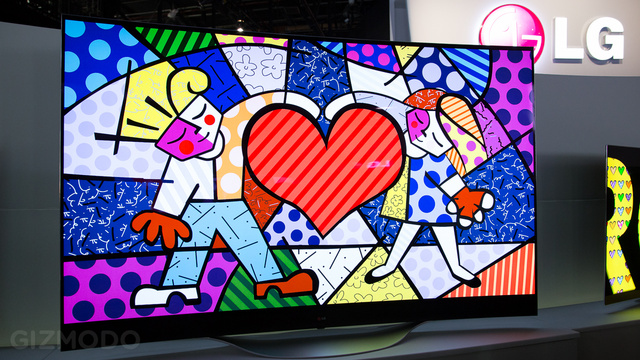The other night we saw a bunch of Samsung’s curved 4K TVs, including a gigantic one that could flex between flat and curved. They looked pretty good. LG’s curved 4K OLED TVs absolutely blow them out of the water.
What’s the difference? OLED. Those four little letters make all the difference in the world.
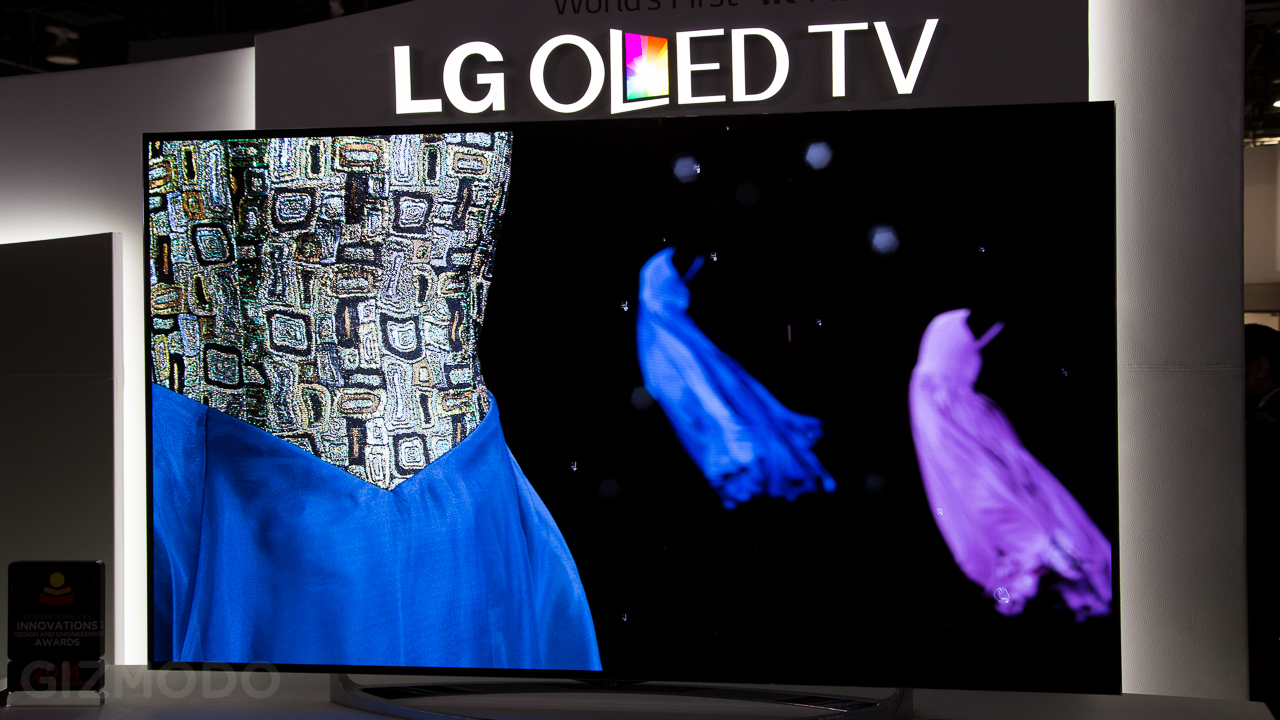
Samsung’s curved 4K TVs use conventional LED arrays to light up the LCD panel from behind. Unfortunately, this leads to imperfect blacks. Because the LEDs light up areas at a time, when the screen goes dark there are little hot spots of light. Or if you have something bright next to something dark, some of that light bleeds over. Compared to what the average consumer has at home they’re still excellent, but next to OLED, they look like garbage.
OLED (or organic light emitting diode) TVs don’t have any LED backlighting. Each pixel, essentially provides its own light. This means that you can have a blazingly bright pixel right next to a pitch black pixel and there’s no light bleed at all. The effect is stunning. Edges are razor sharp and blacks are like looking into a vacuum.

I just spent some time gazing into the soul of the 77-inch version LG’s curved OLED 4K TV, and as you may have gathered, I was really impressed. The colours were bright and immaculate without being over-saturated. Motion was incredibly smooth (unlike Samsung’s offerings, which were pretty choppy, though I think that’s just because they had their motion smoothing feature turned on, which nobody should ever, ever use). The whites were bright and beautiful, and the blacks were like looking into the void of space (minus stars and planetary bodies).
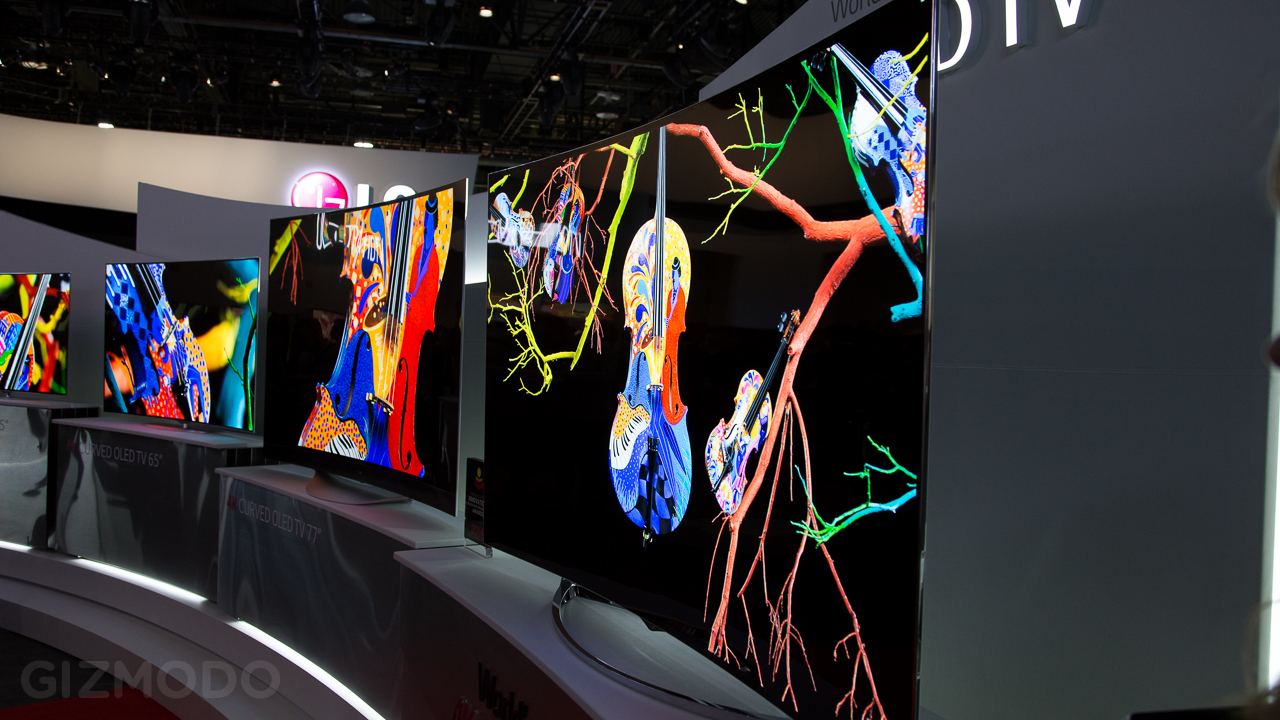
And, as it turns out, Samsung isn’t the only one making a bendy 4K TV! LG had a flexible prototype on display here at CES that works much the same as Samsung’s: You just hit a button on your remote, and it will move from flat to curved. You can stop it at whatever angle looks best to you (up to a point, obviously). The difference between Samsung’s and LG’s? Again, LG’s uses OLEDs, and the difference is massive. It’s just about the most perfect TV I’ve ever seen.
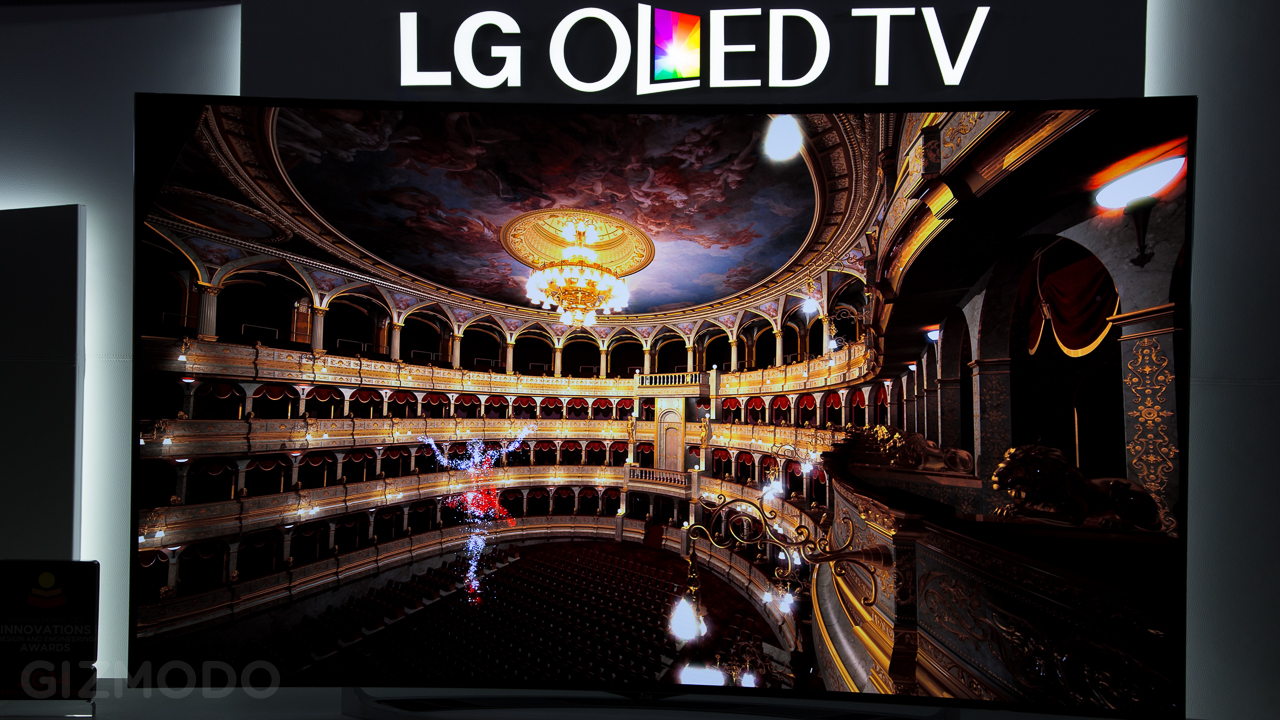
Unfortunately, LG’s flexible TV is just a prototype at this point (where as Samsung is hoping to start selling theirs in H2 of this year, but we’ll see), and even if it were, it would be astronomically expensive. But as far as proof of concepts go, it’s absolutely killer.
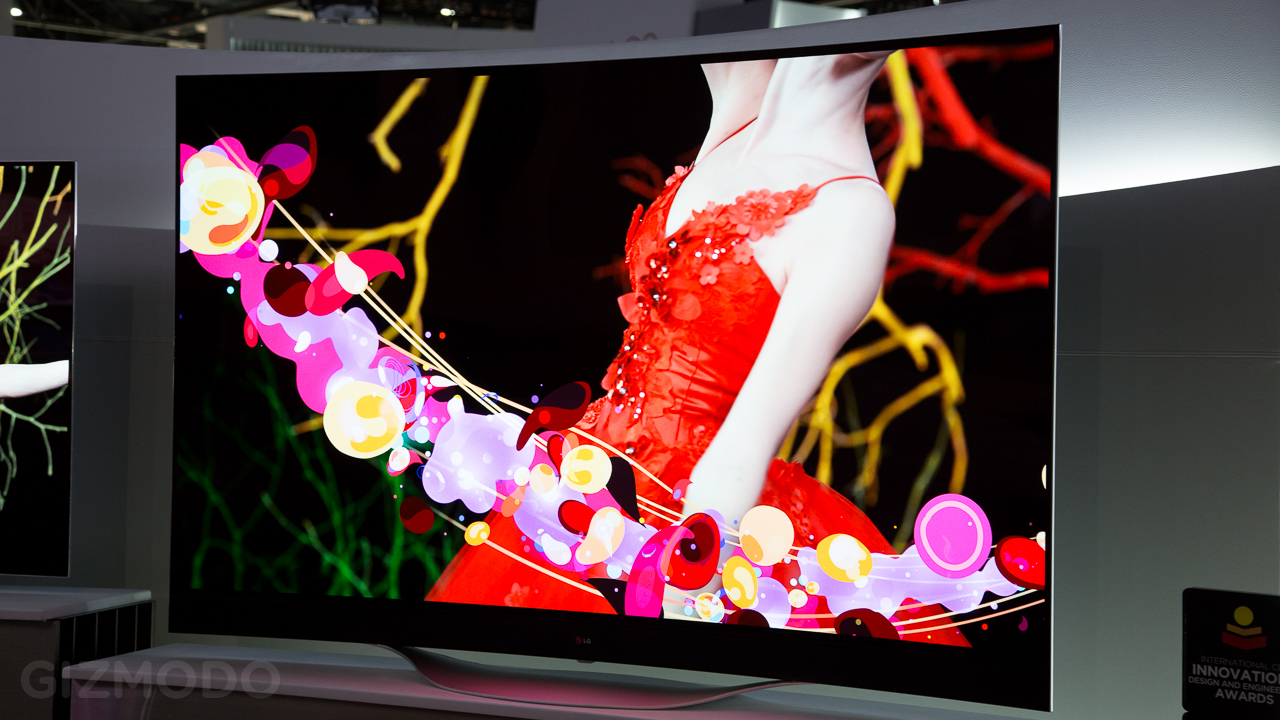
Truth be told, I’m still not 100 per cent sold that curved TVs are worth the added expense, but costs being equal, I’d probably go for it (even though your more limited in your mounting options). If you’re close enough (or the TV is big enough) it really is just a bit more immersive, and the picture seems to have a bit more depth to it. The permanently curved LG OLED 4K TVs will be available in Q2 or Q3 of this year, and if money is no object, you’d be hard pressed to find something better.
